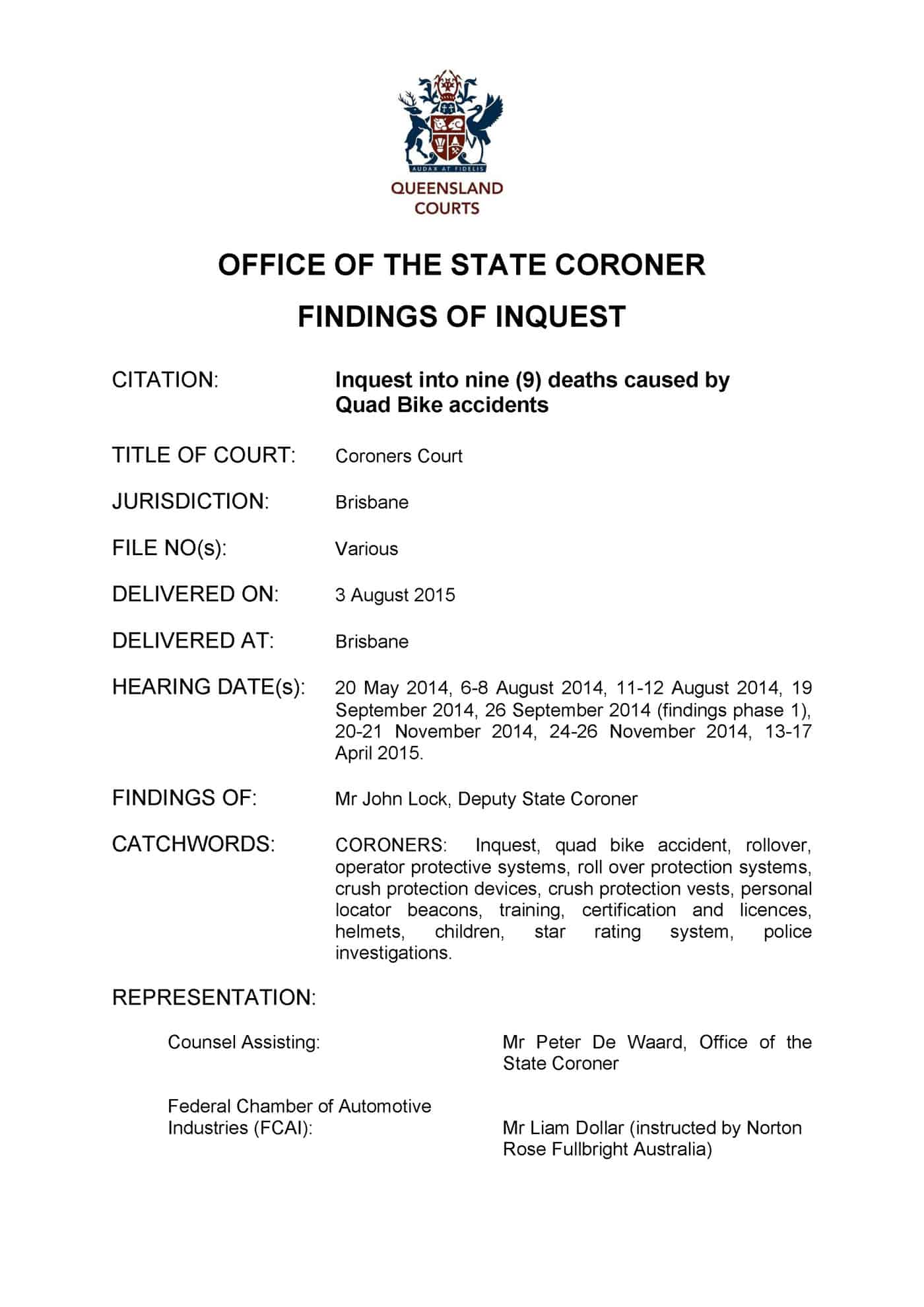The Federal Chamber of Automotive Industries (FCAI) is an integral stakeholder in the improvement in the safety performance of quad bikes. However, some of its past strategies have been belligerent, divisive and have limited the safety debate. There are hints that the FCAI’s communication strategy has changed and this can only be for the better.
On October 1, 2015, FCAI issued a media release that was a gentle questioning of the Star Safety Rating program recently advocated by quad bike safety advocates and researchers. The FCAI says that the research on which the rating system is based
“…does not correlate with real world performance is premature and needs to be further explored.”
 All research needs continuous review and revision but the FCAI is unclear on what is meant by “real world performance” and “real world data”. The media release implies that the real world data is the international standards that have been developed outside of Australia and New Zealand. It mentions the ANSI-SVIA, a voluntary standard developed by the Special Vehicle Institute of America (SVIA). The SVIA’s membership is largely of vehicle manufacturers and is an America-only organisation.
All research needs continuous review and revision but the FCAI is unclear on what is meant by “real world performance” and “real world data”. The media release implies that the real world data is the international standards that have been developed outside of Australia and New Zealand. It mentions the ANSI-SVIA, a voluntary standard developed by the Special Vehicle Institute of America (SVIA). The SVIA’s membership is largely of vehicle manufacturers and is an America-only organisation.
The focus on non-Australia standards has been criticised by many in this debate including the Queensland Coroner who recommended in August 2015 that Safe Work Australia
“317. It is my view that the preference would be that an Australian Standard be developed and adopted for the design, manufacture, import and supply of quad bikes and side by side vehicles. By practical necessity, the US standard must be the starting point, and despite misgivings from some, it was generally agreed that adopting the US standard would be better than nothing……
319. The FCAI is currently supportive of the adoption of the existing US Standards into an Australian Standard. The cross examination at this inquest and in particular the submissions of the FCAI are indicative that it is most unlikely they would support any substantive changes relating to design at this point. But at least an Australian Standard based on the US Standard would set the minimum requirements for future imports, which currently do not need to meet any standard..” (page 50, emphasis added)
The October 2015 media release indicates no change in the position of the FCAI towards quad bike safety but it’s tone is very different from past communications. And the FCAI is reaching out to people in the quad bike safety debate. Recently SafetyAtWorkBlog was contacted by the FCAI’s recently appointed ATV Manager, Mark Collins, for an introductory discussion. Attempts to gain comment from previous ATV people in FCAI have been tortuous and largely unsuccessful.
The debate about quad bike safety has diminished since the release of the University of New South Wales research into quad bike rollovers. Which is a little surprising given that Coroners in two Australian States have recently examined quad bike-related deaths. However the NSW Coronial findings are due for release on 13 November 2015.
These findings will be the last tranche of current investigations into quad bike fatalities and safety so the evidence for changes to quad bike design and operations will reach some form of conclusion this year. Various Australian Governments and OHS regulators are awaiting the conclusion of the research and coronial investigations to develop the safety control options that will establish safety benchmarks for quad bikes in the future. The FCAI has a crucial role to play in this strategy which is designed, ultimately, to reduce workers’, and customers’, deaths and injury.

The Australian Quad Distributors Association (AQDA) Have been more proactive with quad safety. Their November meeting will see a response to the Qld and NSW coroners findings and it is expected to include a free helmet with every quad sold and support for an Australian standard based on the US standard. Since the Qld coroners findings, AQDA has launched a poster campaign to discourage children riding adult quads, and two manufactures (Linhai and SX) now offer a CPD standard on some of their range.
Mark Collins of FCAI has asked that I include some clarification on a couple of points raised in the article above. Below are his words:
The industry is in favour of NCAP style ratings for vehicles where there is evidence to indicate one vehicle’s characteristics are safer than another.
We discuss the requirements of reliable star rating systems in this link to the FCAI website
It reads….
I believe this shows the industry’s positive intent to see an evidence-based star rating system using ‘real world data’ from Australia (it is not from the international standards that have been developed outside of Australia and New Zealand as indicated in the article).
The FCAI a tone may be softer but in fact there is no change in their message. The ANSI standard is the standard that the manufacturers have used for years and it is precisely the standard that places the current designs of quad bikes/ATVs into the Australian market. And those designs do not include crush protection devices, nor do they prevent young children’s operating them by designed, nor do they minimise the opportunity for carrying passengers, nor do they mandate the sorts of front suspensions that would prevent speed wobbles and similar. And it has no minimum requirement in regard to stability.
Yes, Kevin. As a quad bike user and buyer, I wish the FCAI would take more of a leadership role in safety.
Being dragged kicking and screaming towards safety is never a good look and does not inspire confidence in the market.